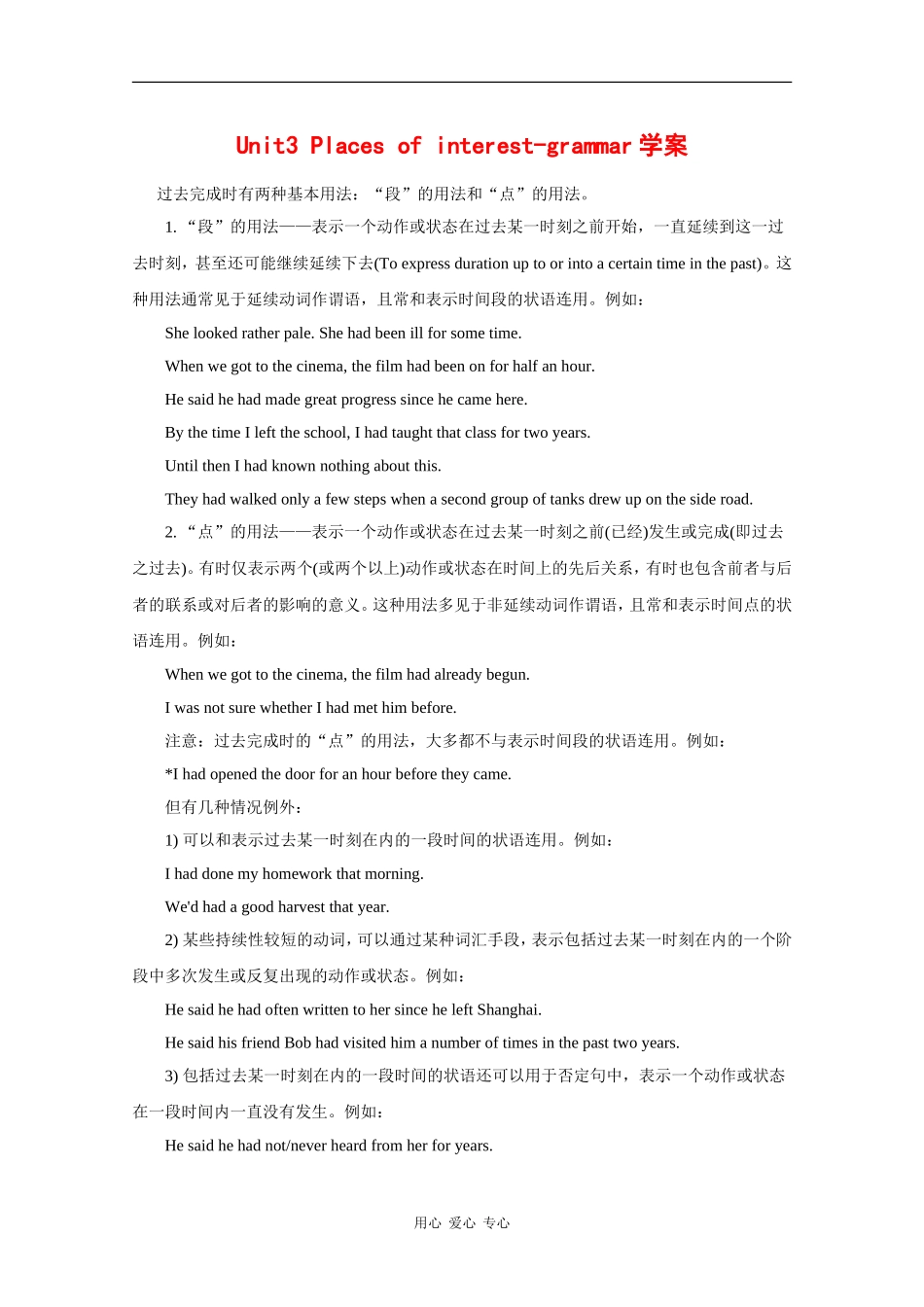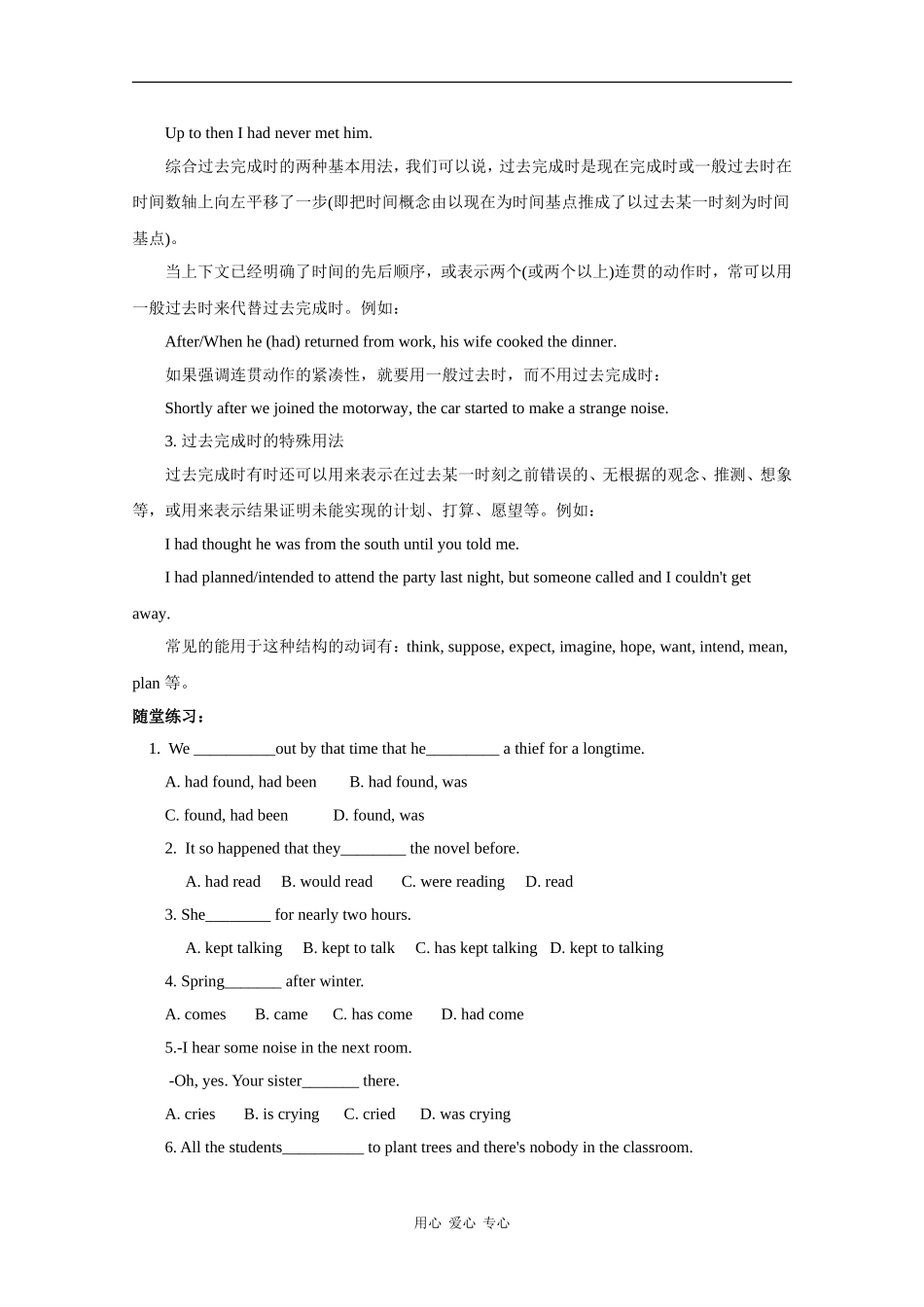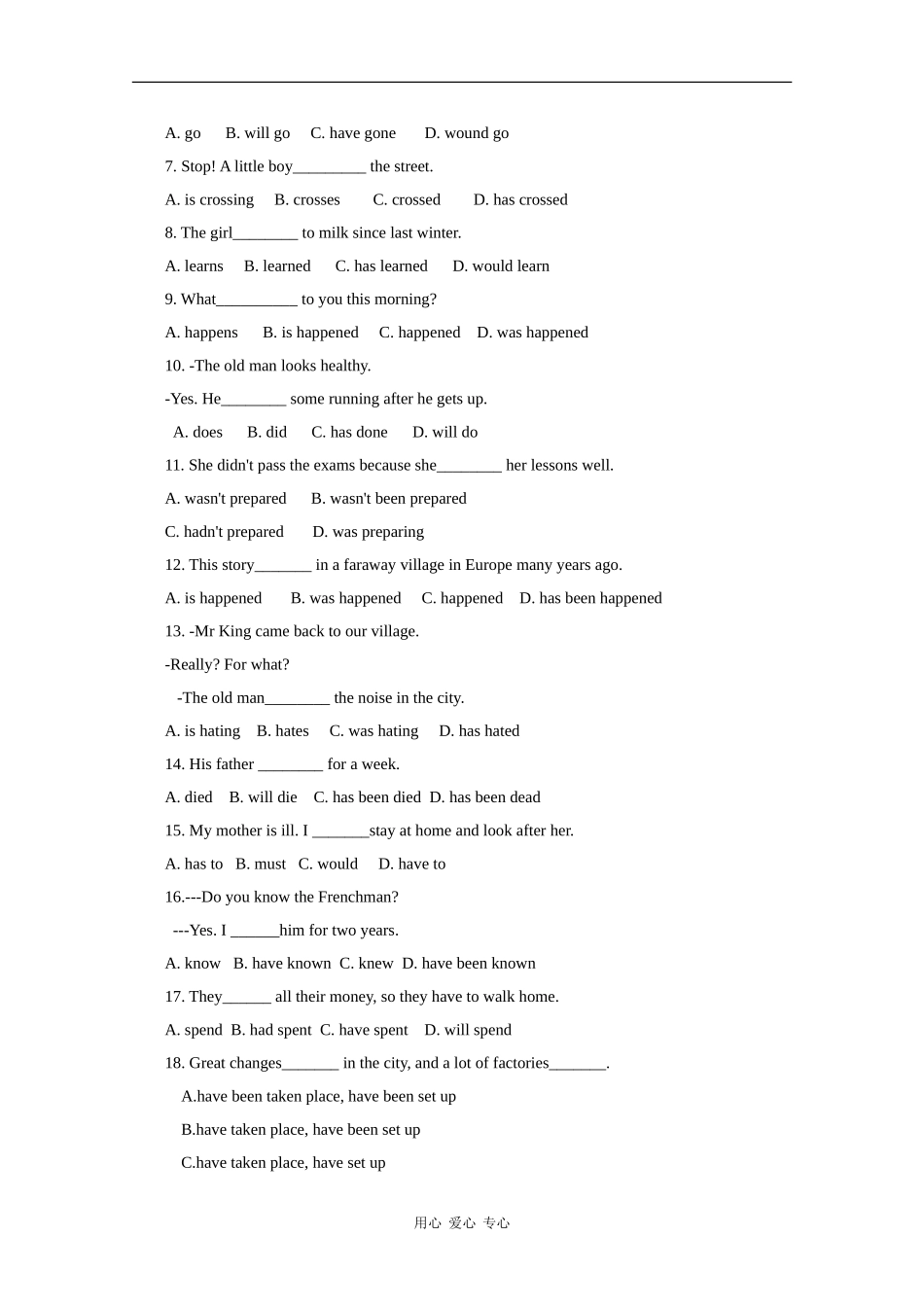Unit3 Places of interest-grammar 学案 过去完成时有两种基本用法:“段”的用法和“点”的用法。 1. “段”的用法——表示一个动作或状态在过去某一时刻之前开始,一直延续到这一过去时刻,甚至还可能继续延续下去(To express duration up to or into a certain time in the past)。这种用法通常见于延续动词作谓语,且常和表示时间段的状语连用。例如: She looked rather pale. She had been ill for some time. When we got to the cinema, the film had been on for half an hour. He said he had made great progress since he came here. By the time I left the school, I had taught that class for two years. Until then I had known nothing about this. They had walked only a few steps when a second group of tanks drew up on the side road. 2. “点”的用法——表示一个动作或状态在过去某一时刻之前(已经)发生或完成(即过去之过去)。有时仅表示两个(或两个以上)动作或状态在时间上的先后关系,有时也包含前者与后者的联系或对后者的影响的意义。这种用法多见于非延续动词作谓语,且常和表示时间点的状语连用。例如: When we got to the cinema, the film had already begun. I was not sure whether I had met him before. 注意:过去完成时的“点”的用法,大多都不与表示时间段的状语连用。例如: *I had opened the door for an hour before they came. 但有几种情况例外: 1) 可以和表示过去某一时刻在内的一段时间的状语连用。例如: I had done my homework that morning. We'd had a good harvest that year. 2) 某些持续性较短的动词,可以通过某种词汇手段,表示包括过去某一时刻在内的一个阶段中多次发生或反复出现的动作或状态。例如: He said he had often written to her since he left Shanghai. He said his friend Bob had visited him a number of times in the past two years. 3) 包括过去某一时刻在内的一段时间的状语还可以用于否定句中,表示一个动作或状态在一段时间内一直没有发生。例如: He said he had not/never heard from her for years. 用心 爱心 专心 Up to then I had ...


